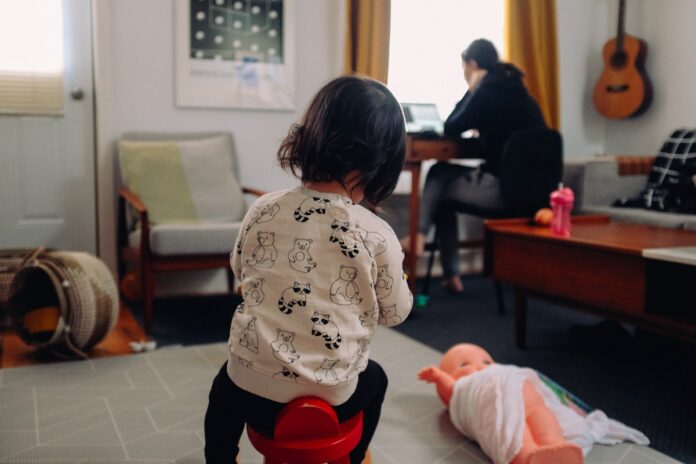With more offices adopting hybrid work as a permanent practice, the future of NYC’s economy is up in the air. Manhattan relies heavily on commuters and full office buildings to keep the economy running at full speed. Now that white-collar workers are spending more time at home than at the office, chances of the City’s economy returning to pre-pandemic levels are small.
Working remotely is set to change more than our work lives. It’s also changing the way we spend our money—and consequently, how local governments make theirs.
In October of 2021, PwC, one of the world’s largest consulting firms, told 40,000 of its U.S. employees they could work from home indefinitely. In December, the law firm Quinn Emanuel Urquhart & Sullivan, did the same. Verizon, which is headquartered in New York, started allowing hybrid employees to come to the office on a voluntary basis.
What do these changes mean for New York, one of the largest and most fast-paced economies in the country?
The pressure to return to the office is strong, but mostly one-sided
Many say the widespread acceptance of remote work is shifting power away from employers and into the hands of employees. While others, particularly those in political office, worry it’s a dangerous workplace trend and a threat to the economy.
Mayor Eric Adams and Governor Kathy Hochul have voiced their concerns on the matter, urging the City’s 1.3 million private-sector office workers to get back in their cubicles.
“You can’t stay home in your pajamas all day. That is not who we are as a city.” said Adams when asked about remote work at a press conference earlier this year. “We must socialize to get the energy that we need as a city,” he adds.
President Biden seems to share the Mayor’s sentiments on remote work, calling on Americans to “get back to work and fill our great downtowns again,” in his State of the Union address.
Biden, Hochul, and Adams aren’t lone wolves in their pleas for a return to the office. A number of politicians and CEOs have expressed their disapproval of remote work as a long-term business practice, claiming it hampers workers’ abilities to collaborate and remain efficient.
Although united in their message, these power players may not realize how out of touch they sound to Americans who have witnessed rents rise about 16%, home prices go up 30%, and gas prices increase by 78% since the onset of the pandemic. Getting back in the office, which would also mean coming back to the city, is a sacrifice many workers aren’t willing to make.
Drop in consumer spending adds to the pressure to ‘return to normal’
The New York Times recently reported that as hybrid work becomes permanent in the Big Apple, “the average NYC office worker is predicted to reduce annual spending near the office by $6,730, from a pre-pandemic total of around $13,700—the largest drop of any major city.”
Economists at Instituto Tecnológico Autónomo de México, Stanford University, and the University of Chicago conducted a study revealing how consumer spending is expected to drop across some of the biggest economies in the U.S.
While NYC is destined to witness the biggest reduction in annual spending around the office, LA is a close second at $5,665. San Francisco doesn’t trail too far behind at $5,293, while Atlanta and D.C. can expect a reduction closer to $5,000.
Furthermore, the absence of Manhattan office workers poses a serious threat to the City’s real estate-reliant tax base. According to the NY State Comptroller’s Office, office buildings in Manhattan supplied more than a quarter of the city’s property tax revenue. These funds are used to fund public services around the city such as schools, parks, and police.
Public transit systems in the City are also expected to suffer as the growing vacancy of white-collar workers on the Metro could result in service cuts, leaving blue-collar workers who must show up to work in person with limited transportation options.
Small businesses catered to commuters, such as coffee shops, dry cleaners, and food vendors are also left vulnerable to the economic side-effects of remote work.
Flexible work policies threaten to fundamentally change the largest business district in the country
In late March, about 37% of New York employees went into the office. Compared to the early stages of the pandemic, it’s a strong percentage, but still well below the 90% norm prior to March of 2020.
Head of human resources at Verizon, Sam Hammock, doesn’t think offices will be occupied at the rate they once were. “It’s never really going to be a return like it was,” he says. “We’re treating people like the adults that they have proven to be over the last 24 months,” citing Verizon’s permanent work from home program.
Penguin Random House, a New York firm employing close to 2,500 people in the NYC area has stated they have no plans of requiring employees to go back to its Midtown offices. “We have said if you want to move, have at it,” said Paige McInerney, director of human resources at the publishing house.
After two years of being able to work from home, many employees have already relocated outside of the City into the suburbs and “exurbs” defined by Time Magazine as “places further away from city centers than suburbs and that are less dense than half of American zip codes.”
With thousands of NYC employees having migrated inland to the neighboring suburbs of Hoboken, Jericho, and Norwalk, downtown businesses dependent on commuter spending may have to consider new kinds of clientele.
Remote-first companies are appealing to new talent, especially women
Software startups like Unqork are catching on to the new workplace trend, having recently announced it would become a remote-first company. During the pandemic, the company experienced substantial growth and currently employs 600 workers worldwide.
“It’s a more efficient way to find talent,” said Gary Hoberman, the firm’s chief executive, about the decision to go remote.
Unqork was previously headquartered in a 50,000 square foot office space in Manhattan’s Flatiron neighborhood. During the pandemic, the NYC startup reduced its office space to just 8,5000 square feet while growing nearly tripling its employee base.
Several companies have adopted a remote-first model in hopes of attracting new talent in what has become an increasingly competitive job market for employers. A survey conducted by Accenture revealed that 83% of workers prefer a hybrid work model.
With a record 5 million more job openings than unemployed people in the U.S., it’s clear that workers are willing to hold out for the right opportunity and are in no rush to get back to the office. This is especially true for women, who are twice as likely as men to say they were only looking for remote work.
Repurposing of commercial buildings not popular among policymakers
Despite the societal and economic changes ushered in by hybrid work, policymakers have only just begun to grapple with what this means for Manhattan. Zoning regulations continue to prevent underused office buildings from being turned into residential housing.
The City authorized a $100 million fund to help real estate professionals convert vacant hotels and commercial structures into housing last year. Due to regulatory hurdles, the fund is yet to be accessed by developers.
New York City comptroller, Brad Lander, believes city leaders have been slow to repurpose Midtown office buildings for education, entertainment, and start-up incubators as well.
“We are not going back to 100 percent Midtown office occupancy,” says Lander. “The sooner that stakeholders come to grips with that reality, the sooner we can take smart action.
Private-sector employers are adamant about bringing workers back to the office
The slow adoption of commercial building conversions may have something to do with the fact that several employers have every intention of bringing their workers back into the office full-time. Around 46% of companies brought workers back to the office between January and February of this year, compared to just 29% at the end of 2021.
CEOs such as Jamie Dimon are adamant about bringing back as many knowledge workers as possible to their desks. He sent out his annual shareholder letter earlier this month, stating that about half of his 271,000 employees would be in the office five days a week. It’s worth noting that his company, JPMorgan, is New York City’s largest private-sector employer.
In his letter, Dimon criticized remote work, stating that it was counterintuitive to effective decision making and “spontaneous learning and creativity.” Certain industries are more likely to require employees to be in-office than others. Many companies in the real estate and investment banking fields started calling back employees as early as June 2020.
Is the worker revolution a threat to the economy, or just capitalism?
According to a University of Chicago analysis, more than a third of jobs can be performed from home. While many of these jobs are reserved for individuals with a college degree, that’s not always the case, as can be observed with self-taught professionals who have received little-to-no formal training in their fields.
Many remote-first companies have admitted that their employees are just as efficient, if not more efficient when working from home. So why are companies still resisting flexible work environments?
While politicians and CEOs point toward the survival of small businesses as a valid reason to get back in the office, there may be another reason behind why local governments and big-name companies aren’t buying into remote work.
Remote work provides employees with considerable amounts of choice throughout the day, taking away mindless routines that naturally feed into the consumer economy. During the pandemic, people started reevaluating the moments that filled their day and emptied their pockets, such as coffee runs, gas station stops, and daycare pickups.
Perhaps the economy as a whole is not what is under threat, but rather the size of it. NYC, like many other American cities, is resilient and has overcome economic strife in the past. The City is likely to do so again, even if its local economy reduces in volume.
Vivian Tejada is a freelance real estate writer from Providence, RI. She writes SEO blogs for real estate, travel and hospitality companies. She's passionate about the future of work and helping Latin American freelancers achieve time, location, and financial freedom. When she’s not writing you can find her at the gym, a family cookout, or at brunch with her girls. Follow her on Linkedin to learn more.



